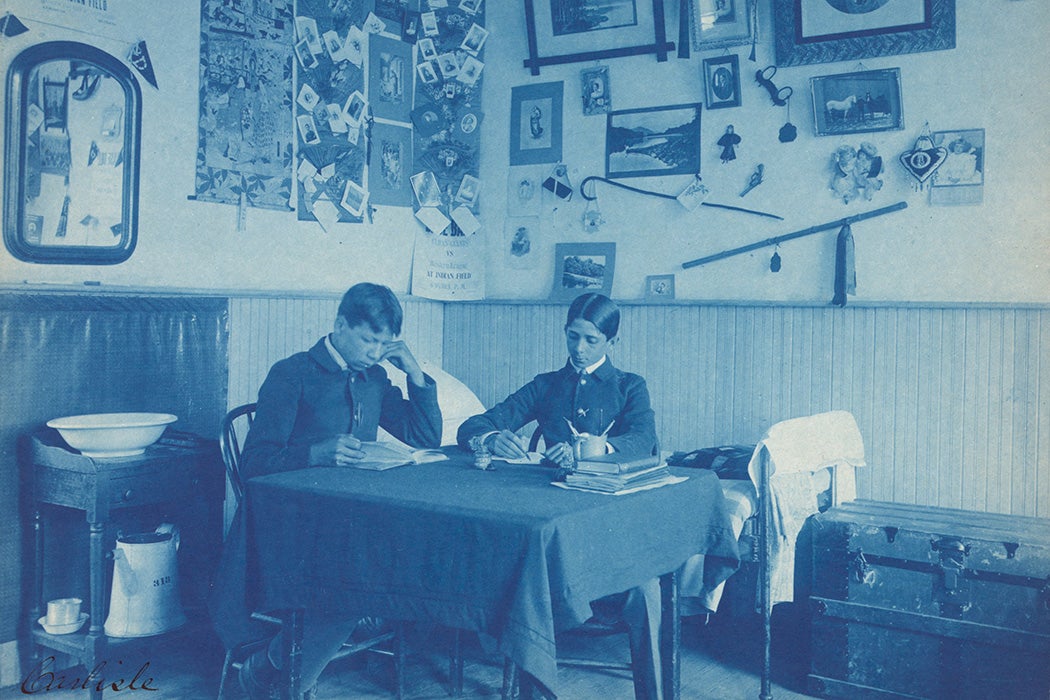Carlisle Indian School was founded on the infamous mission to “Kill the Indian and save the man.” Yet, as Julie Morrow writes, some of its students found ways to push back against this cultural genocide—right in the school’s official publications.
Morrow looks specifically at writing done between 1904 and 1918 by students from the Anishinaabe communities of the Great Lakes and Plains regions. At this time, following the “closing of the frontier,” white Americans began viewing Native cultures with nostalgia, sparking a fad for Indian blankets, baskets, and other arts and crafts. In response, Carlisle’s publications, which were intended for a broad audience including government officials and members of the general public, encouraged more writing about Native American legends, customs, and history. Moses Friedman, who became superintendent in 1908, described these stories as a way of “preserving” cultures that would soon be extinct to satisfy the curiosity of white readers.
But Morrow writes that the young Anishinaabe writers turned this to their own purposes, using the platform “to feature how they and other Anishinaabeg were successfully finding ways to both continue traditions and evolve their cultures.”
A central part of the Carlisle School’s curriculum was preparing students to be “civilized” workers. This came from a perspective that discounted Indian ways of working, such as the Anishinaabeg’s hunting, craft-making, and harvesting of rice, and stereotyped Indians as lazy. Essays published in the school’s periodicals showcased students’ training in trades like blacksmithing and wheat farming.
Yet, in the editorial safe haven of the Indian culture pages, students detailed their tribes’ ways of working. For example, one student, Estelle Bradley, takes time in her telling of a Anishinaabe trickster myth to describe women making rope from the inner bark of a bass-wood tree and using hatchets to chop a large hole in a stump.
“Most of these details are not necessary for the story, but Bradley takes advantage of the genre’s flexibility to share her admiration of native women’s work which was disparaged by Carlisle and mainstream society,” Morrow writes.
Nineteen-year-old Margaret Blackwood wrote in the familiar form of an origin story, telling how her family’s hometown, Ontonagon, Michigan, got its name. But the tale was set not in a mythic past but within living memory, around 1842, and was built around the true story of the theft of her tribe’s land.
Weekly Newsletter
Another student, Edward Bracklin, used an essay about Christmas to contrast white children’s focus on store-bought presents with the joy the “Indian boy” experienced spending the holiday in “the plains and forests which have been his chief source of enjoyment all his life.” At Carlisle, he writes, “many of us get together and talk about the Christmas day that we used to celebrate when our time was all our own and we had no school duties.”
“What ultimately emerged from Anishinaabe student articles is that they were products and sites of adaptation, where students proudly displayed their values, native knowledge, and cross-cultural identities,” Morrow writes.







